Your paid subscription supports my creative projects and allows me to pursue original essays and artworks like these. If you’re already subscribed, I hope you’ll consider upgrading to a paid subscription! Thank you for reading.
I’m sorry, I hope this only happens once, but I just popped a mushroom chocolate and have thoughts on “the thing absolutely everyone is talking about.” The thing in question is, of course, Donald Trump’s mugshot. I know, I know. What a sin. Very uncool. I hope that, in time, you will come to forgive me.
What I lack in originality of subject matter, though, I hope to make up for with the absurdity of my approach. See, I don’t want to talk about Donald Trump, even if, as we’ll soon find out, that’s not something that’s possible to avoid. What I want to talk about is images. Pixels. Colors. Shapes. Yes. That’s exactly it. I want to talk about the shape of Donald Trump.
It was a fascinating affair, in the lead-up to the mugshot drop, seeing so many people collectively waiting on tenterhooks for a single image to appear. It stirred the latent Catholic in me. There was an air of ceremony and occult to the whole thing. An image would at some point reveal itself to us and give us, what, exactly? What would the revelation be?
In the world of Catholic symbology, such apparitions are meant to convey the undeniable, material truth of the cosmos. It is not merely a picture, an image, or a face. It is evidence. Sacred figures like the Shroud of Turin or the Marian apparition of Our Lady of Guadalupe on a Mexican peasant’s apron, to name two prominent examples, are not meant to be perceived as a collection of aesthetic elements, but as proof of the divine as illuminated by the doctrines of the Catholic Church.
Of course, for those of us who don’t quite buy that, we can approach and interpret such images on a more cosmetic level. I myself am an admitted fan of Catholic aesthetics. There does, however, remain an undeniable context to, let’s say, St. Peter’s Basilica in Rome. It is asserted that Saint Peter himself is buried under the main altar. More concretely, the Vatican is the center of faith for millions of people around the world, and it is a seat of tangible power. To deny it this context is to reckon with it on a level that doesn’t really matter, or matters less.
The first mugshot of a former sitting president of the United States was always going to be an image that mattered, which is why people anticipated it so eagerly. The photo was preordained to be significant, which meant that every last detail of it would hold importance. Would he smile? Would he look disheveled? Would he flash defiance, or be the very picture of defeat? What truth would this mugshot reveal to us?
As with anything that becomes a pop cultural event, some wholeheartedly indulged in the circus, some declared themselves above it all, and yet others disseminated misinformation in the form of AI-generated mugshots, such as the one below, which, I believe, tells us a great deal about the hopes many held for what the actual photo would give us.
Here, Trump is a whimpering sad sack whose days of flouting the law have at last caught up with him. He frowns. The skin under his eyes sags. He is limp and powerless in the face of justice, represented here by the collection of letters and numbers behind him. Justice is an emotionless system, one that works, even if it takes its sweet time. Trump, in this false image, is depersonalized by the “N35” that hovers right above his shoulder. “You are no president,” it says. “You’re just another number.”
For many liberals in the United States, this would have been a triumphant image displaying the strength of our (flagging) institutions. Of course, it is an illusion, so draw your own conclusions from that. What the fake mugshot does say, though, is that the real mugshot, when at last it was revealed to us, would initiate an arms race in iconography. All sides of the skirmish wanted it, needed it to be evidence of their dogma.
The image that did eventually reveal itself after so much hullabaloo is quite different from any of the fakes that preceded it, but no less rich in observable elements. Let’s take a look at it together. I feel like a college art teacher in a dark classroom showing slides. I’m loving this. I’m having such a good time. I hope you’re enjoying it, too.
Right, so, here’s the mugshot. Our old chum Trump looks more familiar here in his trademark orange hue. There’s a pale bureaucracy to its washed out colors and its graininess, the kind of image that gets produced in a Walgreens when you’re trying to rush along your passport renewal process. A sheriff badge in the upper left corner provides a stamp of authority, an acknowledgment of the faceless power of the law.
Of course, the elements of the photo that are richest in meaning are the elements Trump had executive control over. His expression is seething, insolent. He cocks one eyebrow, as if saying, “You’re really doing this to me, huh? Big mistake.”
It’s what we should have expected all along from a man who understands on a fundamental level the relationship between politics and imagery, a man forged in the fires of luxury real estate, beauty pageants, and reality television, all fields deeply concerned with manufacturing value from aesthetics. There was never going to be another outcome.
Him showing signs of life is bad news for the #Resist set, making it that much harder to claim it as a symbol of a tyrant’s downfall that can be sold on tote bags in bookstores in quaint northeastern vacation towns. They are more likely to draw pleasure from “inmate number P01135809” than the photo. Indeed, if there is a winner from the mugshot reveal, it’s the burgeoning right wing movement seeking to overturn the presidential election results.
These self-styled revolutionaries immediately set to work reappropriating the visual elements of the mugshot to marry it with a reactionary, populist sentiment. The results, it should be noted, were mixed, as evidenced by “Stop the Steal” organizer Amy Kremer’s photoshop job below, where her “haunted doll” vibe kind of makes the whole thing a bit uncanny.
Mockable as it is to us, the political instinct is an astute one, and it makes perfect sense that many far-right figures followed suit, placing themselves against a gray background with a sheriff’s badge in the upper lefthand corner, a collection of aesthetic elements that is sure to become a shorthand for a certain political sentiment for many, many years. Providing, of course, that Trump and his followers win the context war over the image. I am clicking over to the next slide now, with my clicker. Click.
It’s clear what Trump supporters are angling for. Let’s look at Marjorie Taylor Greene’s version, which is a bit more successful than Kremer’s, because it’s not as spooky. Here, there is a demand to render the sheriff’s badge as a brand of sorts, one that might be stamped on, oh, you know, political dissidents languishing under an authoritarian regime that is hellbent on hunting them down. “Persecution, not prosecution,” her caption reads, along with #MAGAMugshot, the hashtag a request for like-minded individuals to reproduce the image.
With this, Greene has submitted all the necessary paperwork to have the aesthetic elements of Trump’s mugshot officially inducted into the halls of American iconography. If successful, she and her ideological allies will cement its status as an image of rebellion, of political martyrdom, of defiance in the face of oppression. You must see, dear viewer, how compelling this all must be to a person already sympathetic to Donald Trump, a person who likely sees themselves as a long-suffering victim of the political machine.
It must be said that there’s something utterly Christian about all this. The United States has historically been a nation obsessed with the “victim king” mentality. Jesus was a powerful entity who was mistreated by the state and ultimately unjustly executed, but will return to rule over heaven and earth. The American fetish for victimhood and martyrdom sees a persecution complex in the ruling class and in people who hold a great deal of cultural capital in the country.
Trump’s mugshot, a photograph of a wealthy elite who was booked for crimes he committed of his own volition, is a perfect medium for those seemingly paradoxical sentiments and, at least on an aesthetic level, resolves them. It makes tidy what ought to be a fraught ideological situation. It’s all rather clever coming from the side of “people who want to bomb Mexico.” I’m clicking again. Click!
This is the image that Donald Trump posted on Twitter after a long hiatus from the platform. It easily breezed past one million ‘likes,’ so let’s take it seriously. The absolute austerity of its presentation, blank space with all-caps text, brings our attention to the clarity of its message: THIS IS AN IMAGE OF DEFIANCE. My “favorite” thing about it is ELECTION INTERFERENCE, which both announces what Trump has been accused of by the corrupt system and kind of supports the idea of doing it. It’s a bit proud, isn’t it?
Taken all together, these images seek to convey a sentiment that overrides the reality of things. NEVER SURRENDER, shouts the text, but the photograph itself captures a precise moment of surrender. Trump literally surrendered. He told us the exact time he would be surrendering. 7:30 p.m. EST. But Trump, again, is a person who understands that imagery can cancel out material reality. Let’s take a look at this AI image he shared of himself.
You will notice many things about it. For one, he has never actually looked this cool. For two, this Trump-But-Not-Trump inhabits a vague non-space that references a church or some marbled temple without actually being one. I’m not certain that’s what his legs would do in that situation, either, but I have no way of testing this.
Entirely irrelevant, of course. The irreality of the image, I mean. It is real and not real. It evokes precisely what it is meant to evoke, and I would even give it kudos for being economical about it. It conjures the solemn, pious act of Christian prayer through sparse use of commonly understood motifs. To look at it more closely (which is where the project becomes undone) is to recognize that it successfully directed your subconscious to certain visual conclusions, even if you never for a second bought it as a genuine photograph.
Whether Trump actually believes he looks like this doesn’t matter. What matters is that he is able to communicate his sympathies to certain political movements through this false image. For Trump, it’s never about what he actually looks like. This might be uncouth to say, but Trump is not conventionally attractive. He kind of looks like shit, doesn’t he? Are we allowed to admit such a thing in the midst of intellectual inquiry?
He doesn’t need to be attractive, though. What he needs is to abstract his image enough so that it might speak to a wide variety of cultural anxieties, which brings me back to “the shape of Donald Trump.” You could call it branding, but the man has managed to contextualize his (in one writer and artist’s opinion, unpleasant) image into its own visual lexicon with many synonyms. Anything that is even vaguely Trump-shaped can be inducted into the public project of Trump. It’s how he shares images like these, an NFT he hoped to sell, without any shame whatsoever.
Ah, yes, but what is that image of The Death of Marat by Jacques-Louis David doing up there? The painting was made at the height of the Reign of Terror in France and features David’s personal friend, Jean-Paul Marat, murdered in his tub holding a proof of his newspaper, L'Ami du peuple, which frequently named enemies of the revolution.
Marat took these baths because of a skin condition he had, and he likely did not look at all like the martyred saint in the painting. His assailant, Charlotte Cordray, blamed Marat for the September Massacre. She was later executed for murdering him. The painting became a popular symbol for the revolution, and several copies were made. The vibes of the revolution were later called into question, resulting in David being canceled until one Napoleon Bonaparte came around looking for dramatic oil paintings of himself.
In any case, the instinct to make martyrs and symbols out of flesh-and-blood political actors is nothing new. Most crucially, the image ought to repeat. An image in isolation is a message. The ubiquity of an image is power, as many Roman emperors who minted themselves on their citizens’ currency would attest.
Should Trump manage to retake the White House, which is far from a foregone conclusion, this mugshot could very well serve a truly frightening role in the myth-making of a regime. The right wing seems to understand this.
As for my little corner of the internet, there’s an urge among a loose conglomerate of people that I’ll call “my peers” to process the mugshot and the attendant social event that formed around it as yet another piece of pop cultural ephemera, an approach that’s as entertaining as it is useless. I don’t know what the criteria is for a successful evening on the internet when a president’s mugshot drops. Perhaps it should have been funnier? True connoisseurs of Trump’s suffering were always going to prefer the night he was hospitalized for COVID, but it all feels a bit irrelevant and silly in the grand scheme of things.
In any case, neither the “hehe, haha” nor the “well, actually” of it all really contends with the relationship between power and image-minting, the subject that came to my mind when at last I was able to look upon the photograph. I see a struggle to ossify the meaning of an image for political purposes. The victor gets to eradicate the enemy’s agency of their gaze, forcing them to contend with the image on their terms.
It’s a war that can never be totally won, of course, but in waging it, there are many short-term, and possibly long-term benefits to be had for a movement that’s motivated to overturn the social order and rearrange our government according to their designs. They’re not fighting the battle with facts, but with sentiment, and sentiment is a powerful thing in anxious times when people rely on gut feelings and superstition to dictate their political positions.
The question then becomes, I suppose, how does “our side” fight back? Do we enter the iconography wars and propagate imagery of our own? Do we make a mockery of Trump and his allies, asserting that the rough shape of him does not connote defiance, but defeat? Idiocy? Treason? I guess I don’t know.
What I do know is that it’s incredibly likely that this collection of shapes will toil for many years generating a wide variety of meanings depending on the cultural landscape that exists around it. It will probably be printed on shirts that will both signpost a certain brand of politics on the street and end up in a landfill somewhere. Where it will ultimately rest, the way it will be interpreted a lifetime or even several lifetimes from now, well, I suppose that’s up to us.
Isn’t it?






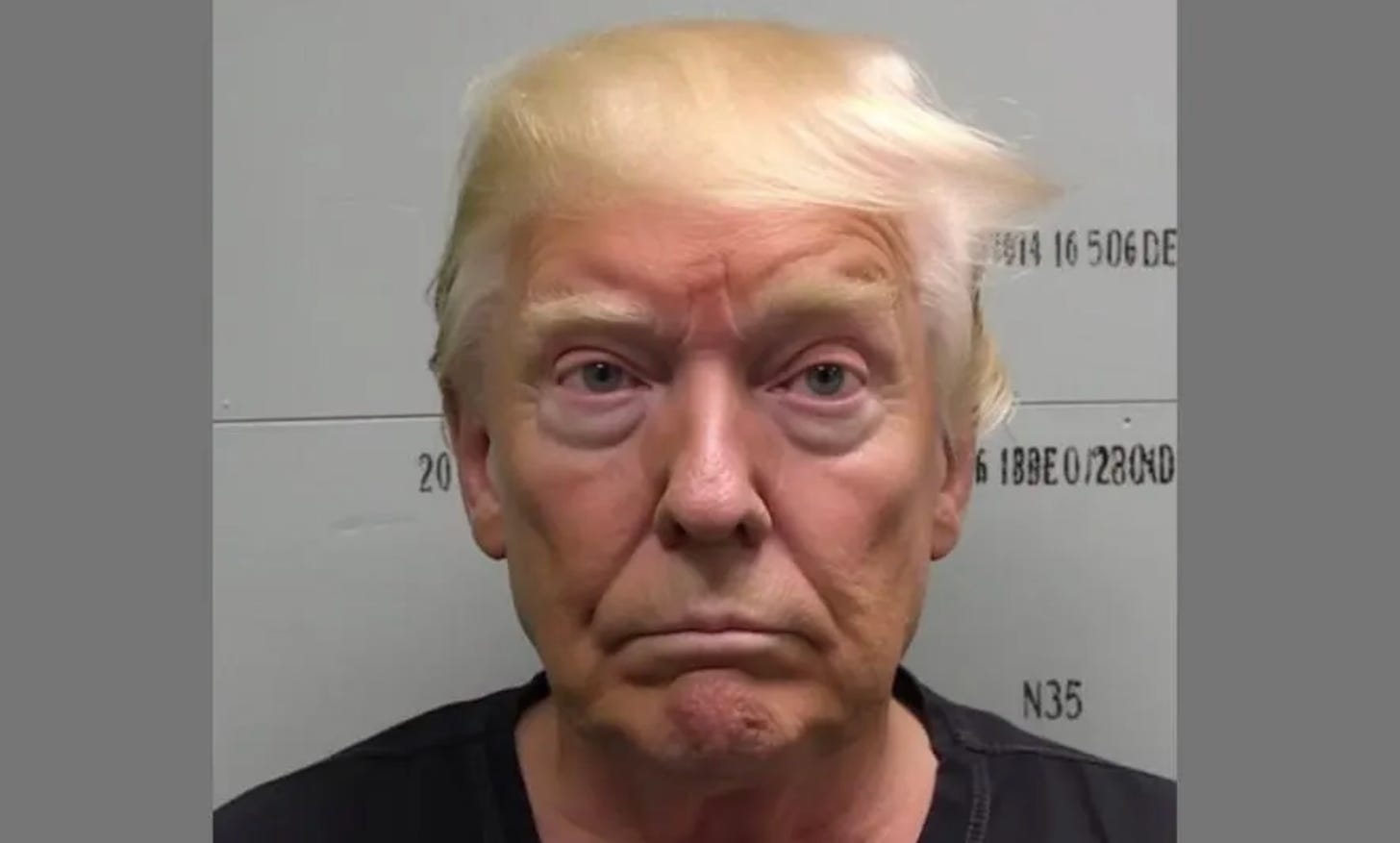
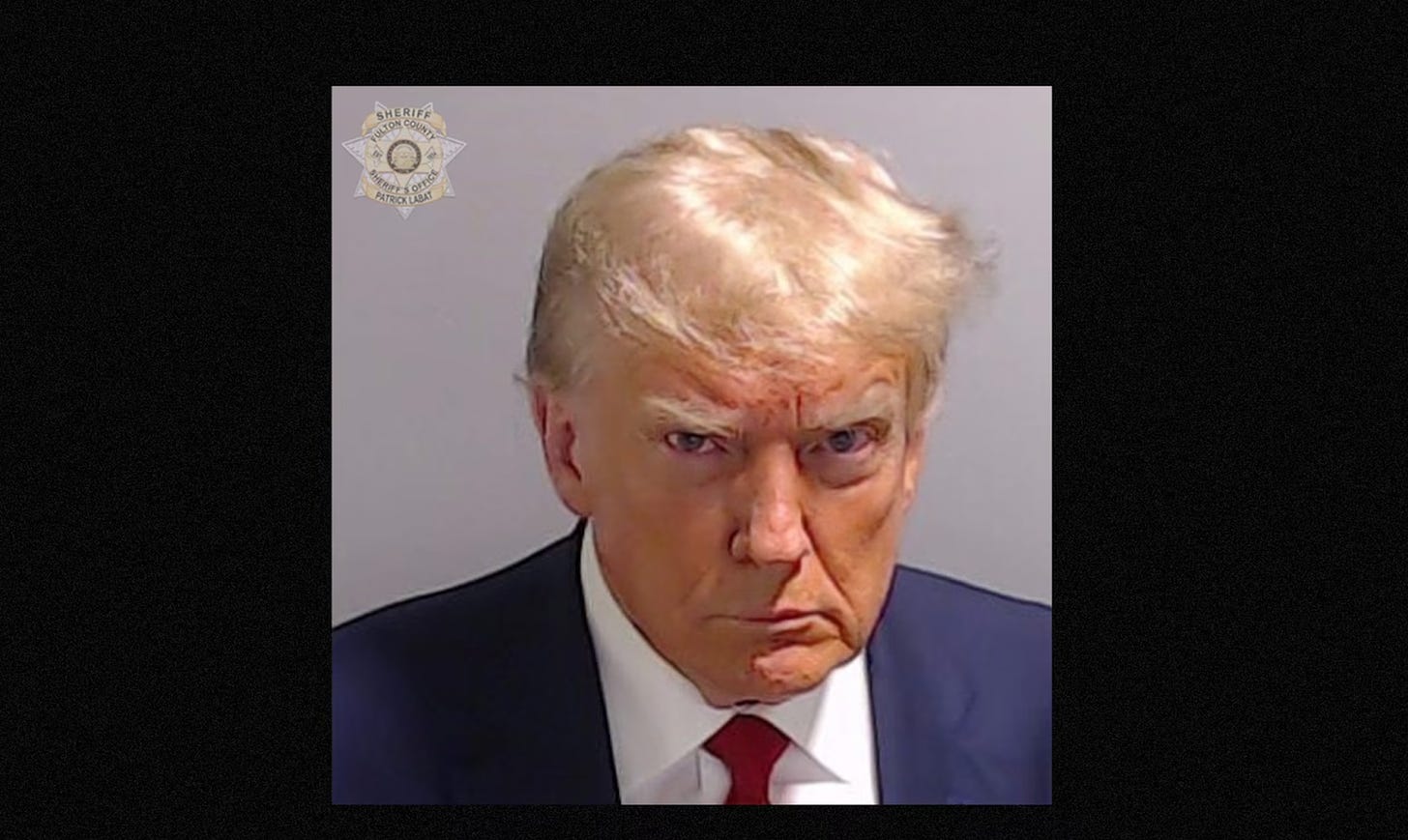


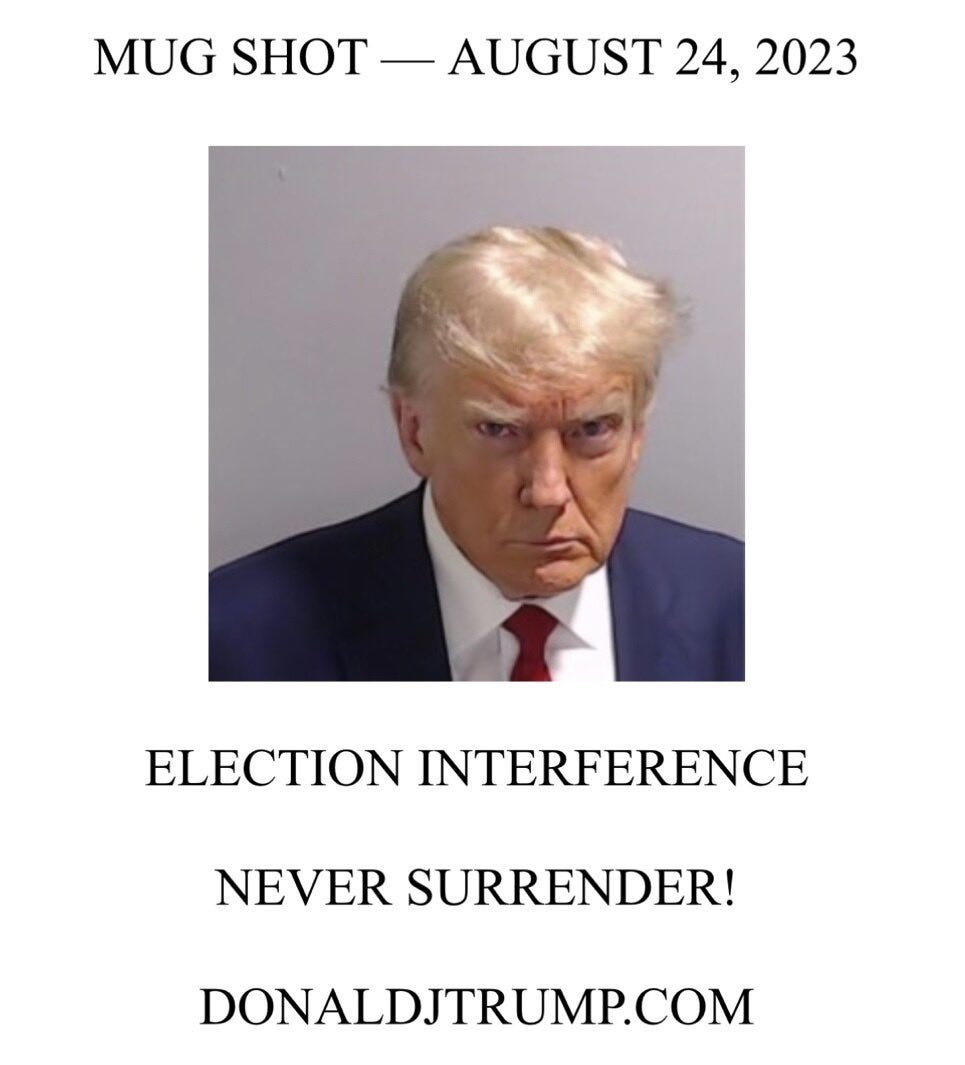
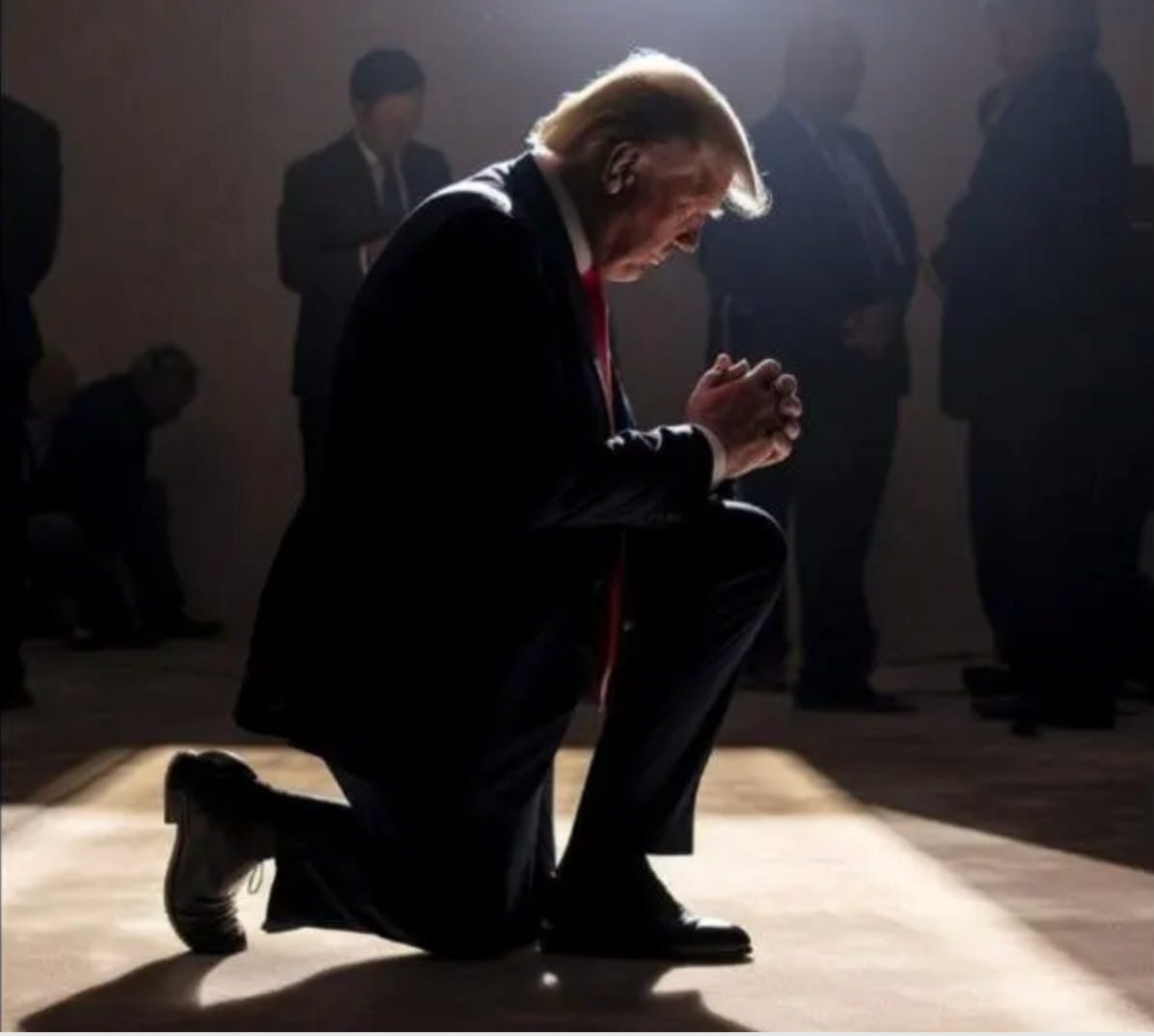
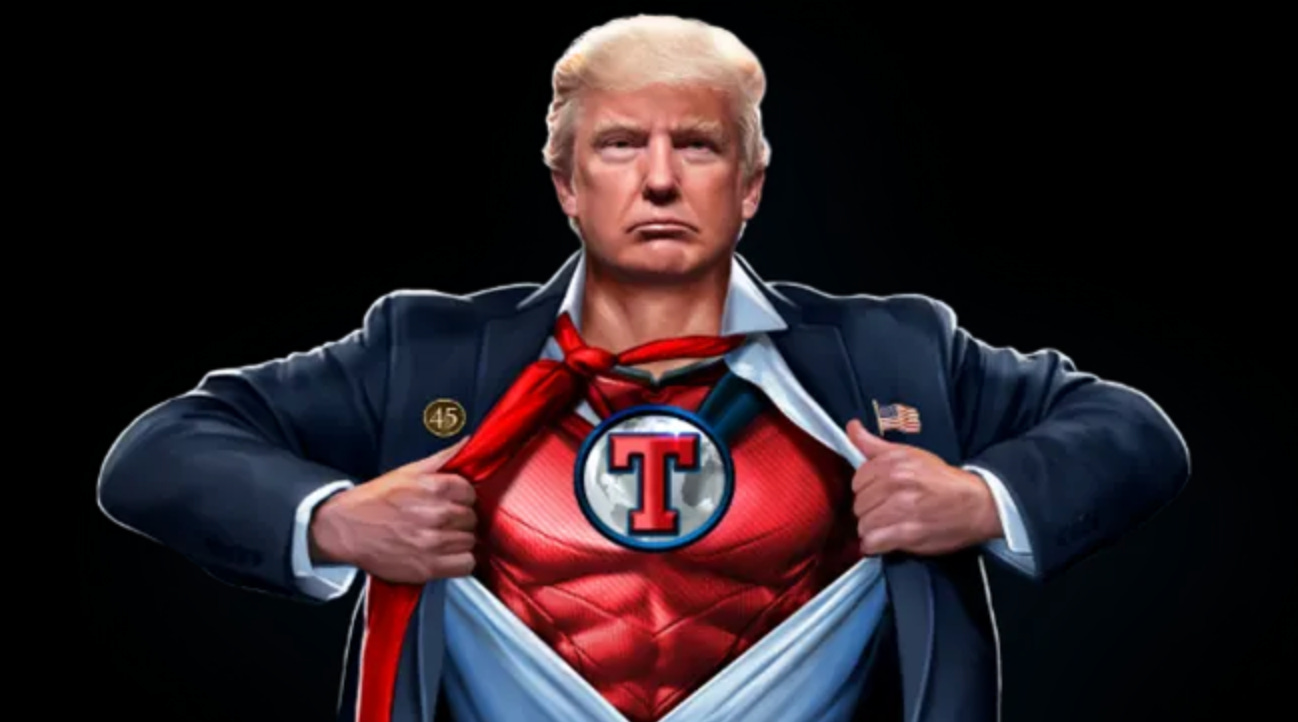
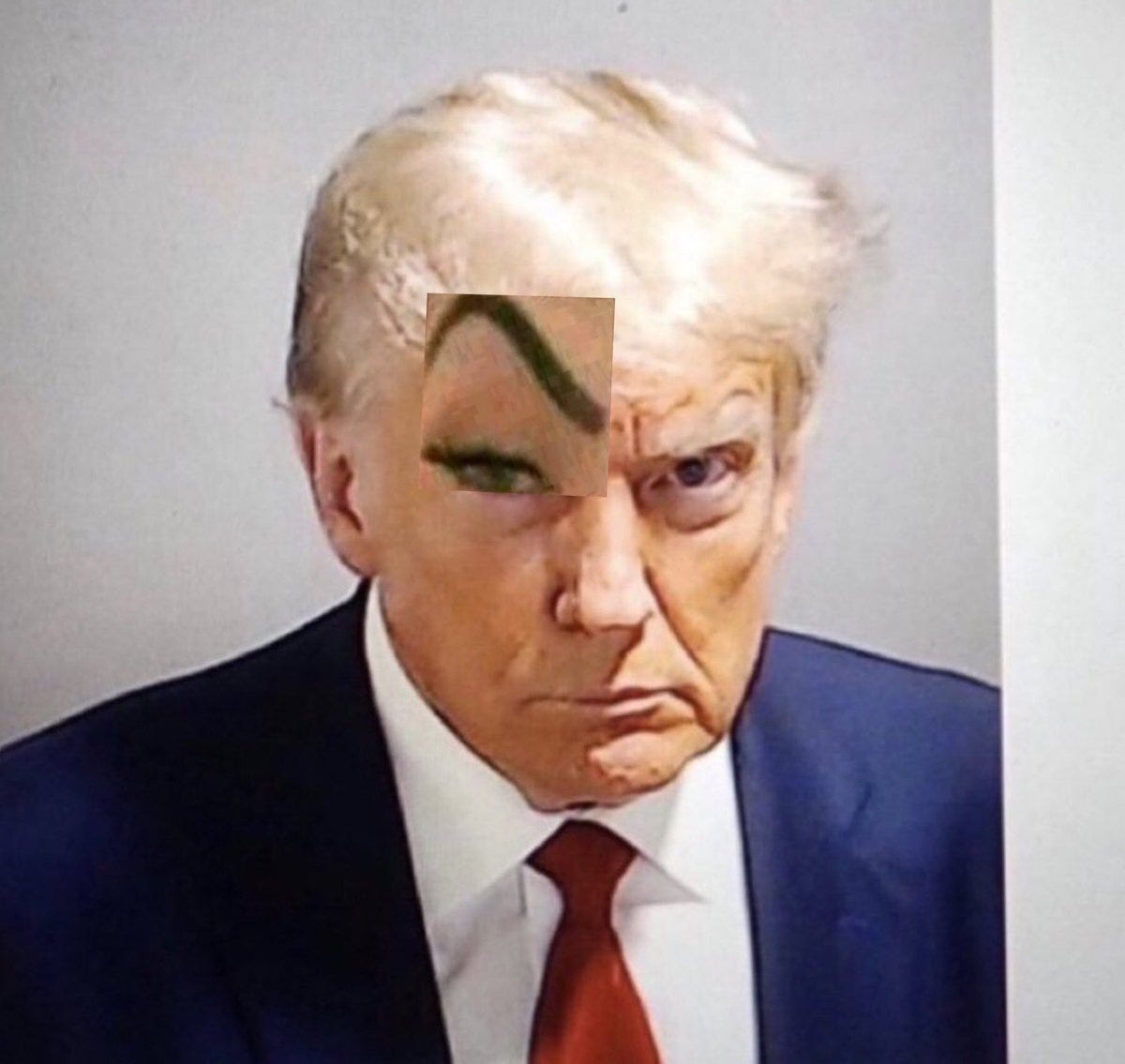
"It was pride that changed angels into devils; it is humility that makes men as angels." Saint Augustine quoted here.
"They’re not fighting the battle with facts, but with sentiment, and sentiment is a powerful thing in anxious times when people rely on gut feelings and superstition to dictate their political positions." Papi, this phrase should be repeated every time we discuss the political battle in our country.